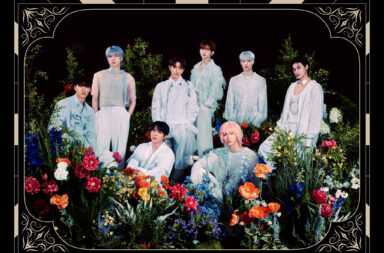 One of the biggest up and coming girl groups made a comeback this week, releasing only their second single since debuting in 2015. Having already garnered millions upon millions of views on YouTube and establishing themselves as ‘fancam goddesses,’ this much anticipated comeback is sure to make a splash. Is it Twice? G-Friend? Red Velvet? No, it’s Bambino!
One of the biggest up and coming girl groups made a comeback this week, releasing only their second single since debuting in 2015. Having already garnered millions upon millions of views on YouTube and establishing themselves as ‘fancam goddesses,’ this much anticipated comeback is sure to make a splash. Is it Twice? G-Friend? Red Velvet? No, it’s Bambino!
If the mention of Bambino sounds unfamiliar to you, it probably means two things: 1) you’re not Korean, and 2) you’re not male. Practically unknown to most international fans, Bambino has generated a strong following among male audiences in Korea. To fully understand how this happened, we must dive into the dark depths of the idol-fan relationship to uncover the growing phenomenon that is fancam culture.
Underneath the squeaky clean surface of the idol industry, there lies a dark underbelly of exploitation. I’m not talking about slave contracts, sexual abuse, or the paparazzi who are out to destroy an idol’s career. Those are the kind of things we’ve already come to expect from an industry built upon exploiting the energy and naivety of young people starved for fame.
There’s been a new form of exploitation that’s popped up in recent years, one that’s largely driven by improved video recording technology that’s become widely available and affordable to the masses. Nowadays, it’s not necessary to spend exorbitant amounts on a professional-grade camera to get a good fancam. All that’s needed is a phone with a high-end camera to capture fancams of incredible quality. As a result, fancam videos have become all the rage in recent years, allowing amateur footage posted on YouTube to reach views in the millions.
 Remember the infamous fancam footage that shot Hani and the rest of EXID towards instant fame? That was the first indicator of how big fancam culture was becoming. Since then, an entire industry has formed out of people capturing fancams of idols performing on stage and garnering massive amounts of views from posting them via YouTube and other outlets. In return, an entirely different type of idol group has appeared on the scene to cater specifically to fancam culture: the dance troupe.
Remember the infamous fancam footage that shot Hani and the rest of EXID towards instant fame? That was the first indicator of how big fancam culture was becoming. Since then, an entire industry has formed out of people capturing fancams of idols performing on stage and garnering massive amounts of views from posting them via YouTube and other outlets. In return, an entirely different type of idol group has appeared on the scene to cater specifically to fancam culture: the dance troupe.
Let’s be perfectly honest about what fancam culture entails. These fancam takers are very deliberate about who they’re focusing the camera on, which is that of sexy female idols. The entire purpose of fancam culture is to cater to the viewing pleasure of men. The sexier, skimpier, and more provocative the performer, the greater the demand there is to get a fancam of her.
Fancam culture basically embraces the idea that music is a glorified form of stripping. There’s no form of tact or subtlety in any of these videos. The person recording is generally right below the stage, at a prime angle to get an upskirt or upshorts shot of the female performer during those critical moments in the choreography when she is required to bend over or spread her legs. It’s mostly just a peepshow for the intended male audience with the focus always being on what provocative move the performer is going to do next.
Ever since the Hani incident, entertainment companies have picked up on how to market to fancam culture by replicating the Hani model: have female idols perform in revealing outfits, with the compulsory super short skirt or shorts, and perform provocative choreography that is banned on music shows. There are a handful of established groups that play into fancam culture. Stellar, AOA, and Hello Venus are popular idol groups which have a strong presence in fancam culture. The infamous G-Friend fancam did not slip my mind but that’s an entirely different topic — idol accidents.
 Aside from popular idol groups, there is an entire slew of lesser known groups which exist to specifically cater to fancam culture. They’re not like typical idol groups in that they generally do not promote on music shows, nor release MVs, nor even make music for that matter. They promote almost exclusively through public performances in which they mostly do sexy dance covers of popular hits. It is why they are better known as dance troupes, though the line between a dance troupe and an idol group are at times blurred.
Aside from popular idol groups, there is an entire slew of lesser known groups which exist to specifically cater to fancam culture. They’re not like typical idol groups in that they generally do not promote on music shows, nor release MVs, nor even make music for that matter. They promote almost exclusively through public performances in which they mostly do sexy dance covers of popular hits. It is why they are better known as dance troupes, though the line between a dance troupe and an idol group are at times blurred.
The main difference between idol groups and dance troupes is in their member composition. Idol groups seek a balance of members with diverse skill sets, having each member specialize in different aspects of performance whether it be singing, dancing, or rapping. On the other hand, dance troupes generally consist of only dancers. That is because the dance aspect is by far the most important part of their performance. Very little is expected of them in other departments.
Since dancing is the only mandatory skill, it’s not a big investment for companies to form a dance troupe and to rush the group into production. In fact, the startup cost for a dance troupe is significantly lower than that of an idol group. There’s no need to take on trainees for years in order to hone their performance skills when most of what is asked of them is that they dance. Better yet, it’s even simpler to recruit former trainees who couldn’t make it to debut at an established agency. It wouldn’t be at all surprising if a lot of these dance troupe members were once former trainees with dashed hopes of ever making it into an idol group.
Furthermore, the production values for dance troupes are either super low or non-existent. There’s no need to hire expensive music producers or songwriters when the focus isn’t on creating music. There’s no need to produce high budget MVs or to get on music shows when the focus isn’t to compete with idol groups. The main focus is simply to put on public performances in order to pander to fancam culture. By gaining exposure via fancams, dance troupes create a demand for people who want to see them perform live. The more opportunities they get to perform live, the even greater their exposure becomes. The greater their exposure, the more revenue they generate from each performance.
Let’s take Bambino for example. The MV for their debut single, “Oppa Oppa,” is about as low budget as one can get. It’s the four members in a small studio performing the song’s choreography. The twist is that it’s one of the earliest videos to utilize 360 VR technology, allowing the viewer to center his attention on one particular member at a time. By giving the viewer control over the positioning of the camera, it encourages the viewer to create his own fancam.
The song itself is noteworthy in that it includes a very muted range of vocals. It’s meant to be an earworm yet it lacks the production value to match the quality of mainstream K-pop. Bambino’s live performances consist mostly of dance covers. When the members do sing, it’s generally just the few required lines from “Oppa Oppa.”
 Despite such a primitive promotional strategy, Bambino has found tremendous success in the fancam world. Whereas Hani’s was the first fancam video to go viral and receive views in the multi-millions, popular fancam videos nowadays can easily achieve views in the millions. Given that these videos are uploaded on a regular basis by fancam takers who do it as a source of income, the culmination of all the views generated from videos of Bambino in the past year likely add up to more views than most established idol groups have garnered.
Despite such a primitive promotional strategy, Bambino has found tremendous success in the fancam world. Whereas Hani’s was the first fancam video to go viral and receive views in the multi-millions, popular fancam videos nowadays can easily achieve views in the millions. Given that these videos are uploaded on a regular basis by fancam takers who do it as a source of income, the culmination of all the views generated from videos of Bambino in the past year likely add up to more views than most established idol groups have garnered.
Having earned the label of ‘fancam goddesses’ by the Korean press, Bambino’s most popular member is undoubtedly Eunsol who’s being referred to as the second coming of Hani due to all the fancam attention she’s receiving. Most fancam videos tend to focus on just one member and it’s no surprise that a good majority of Bambino’s fancams focus specifically on Eunsol. With the rising popularity of Bambino and Eunsol, the modeling offers have already started rolling in and it’s only a matter of time before the general public catches on to who they are.
The MV for their recently released single, “Moonlight Shower,” shows that there’s more production value being put into the visuals and the music this time, likely due to a growing revenue stream, but it’s still far from meeting the standards of mainstream K-pop. Likewise, the vocals are still hardly present. The dance seems adequately provocative with an added emphasis on the footwork. The MV will soon be an afterthought once it’s been buried under the mountains of popular fancams of the song’s live performance .
As mentioned, there are a multitude of dance troupes that have gained a strong foothold within fancam culture. Bambino’s biggest rival, Laysha, is from the same label, JS Entertainment. Aside from these two, there’s also Ace, Six Bomb, and Tweety just to name a few.
Similar to fanfics and shipping, fancams are another extreme example of how K-pop fans like to indulge in their favorite idols. Whereas the former two are largely engaged in by females, fancam culture almost exclusively draws its participation from males. Fancam culture pushes the limits of sexual objectification and ruthlessly exploits the age-old girl group technique of pandering to the male gaze. In doing so, it offers a desperate alternative for former trainees to continue pursuing their dream of becoming a star, albeit in a much less pristine and more exploitative fashion. The full potential of the dance troupe remains yet to be seen and a lot of it likely depends on how far Bambino continues to rise.
Readers, what are your thoughts? Will Bambino become the next big thing? Does fancam culture disgust you or does it entice you?
(Naver[1][2], Sports Khan, YouTube[1][2], Images via JS Entertainment, WA-Factory, Maxim)


